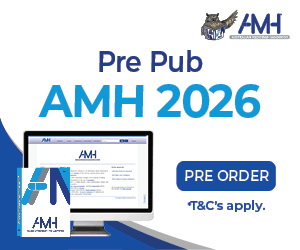Optimising medicine use in older people is a complex balance between disease management and avoiding medicine-related problems
As a person ages (particularly after the age of 70) they are more likely to have multiple chronic conditions, leading to the use of multiple medicines—commonly referred to as polypharmacy. While medicines can improve a person’s ability to function and their quality of life, they also come with risks.
As well as the presence of multiple morbidities, the risk of harm from medicines increases with frailty, weight loss, and impaired kidney function. The “prescribing cascade”—where one medicine is prescribed to manage the side effects of another—contributes to polypharmacy. For these reasons, older people using multiple medicines have an increased risk of medicine-related harm, such as increased risk of confusion, falls, functional decline and hospitalisations.
Medication review and deprescribing
Regular medication review with a view to deprescribing is essential for older adults using multiple medicines. Reviewing a patient’s medicines prompts assessment of their current health goals, ensures treatment is aligned with their changing needs, and provides an opportunity to identify medicines that could be deprescribed.
A medication review is therefore not just about assessing what medicines a person is taking and how they are taking them—it’s about seeing if they still need each one.
Nurses can play a vital role in identifying patients who could benefit from a medication review. With their knowledge of the patient and potential medicine-related problems, nurses can discuss the benefits of a medication review to the patient, and with patient consent, communicate the patient’s needs to their GP and pharmacist so they can arrange a review. Nurses may also provide valuable insights to the review.
Deprescribing – is this medicine still needed?
Deprescribing is an integral part of medication review in older people. It is a structured, supervised, and patient-centred process that focuses on reducing or stopping medicines that may no longer be necessary or could be harmful. It involves reassessing each medicine with a view to discontinuing those that:
- have no clear benefit,
- may be causing harm,
- are being used for conditions that are no longer present, or
- do not fit with the patient’s current goals of care (e.g., if patient has entered a terminal phase of illness, become frail or developed dementia)
Deprescribing is not the same as withholding treatment. It is a proactive step that focuses on improving quality of life and ensuring that medicine use is appropriate, beneficial, and safe.
Understanding the consequences of deprescribing
Potential benefits
When deprescribing is done carefully, potential benefits to patients may include:
- reduced risk of drug interactions and adverse effects,
- improved function and quality of life (e.g. improved cognition and behaviour, reduced risk of falls)
- a lower risk of hospital admissions,
- simplified medication regimens, leading to better adherence and reduced burden for patients and carers, and
- decreased medication costs.
Potential harms
Although deprescribing can offer many benefits, there are potential risks. Withdrawal symptoms or a return to a patient’s original condition may occur when a medicine is ceased too quickly or without adequate monitoring. For instance, stopping beta-blockers abruptly can lead to rebound tachycardia, and ceasing benzodiazepines too quickly can trigger withdrawal symptoms.
Most risks can be minimised by ensuring that deprescribing is carried out gradually and under medical supervision. It is also important to distinguish between disease recurrence and withdrawal effects, which may be short-lived.
Implementing a deprescribing plan
Effective deprescribing requires a structured and collaborative approach. Key steps include:
- assessing the patient’s current health status, care goals, and preferences,
- taking a thorough medication history, including over-the-counter and complementary products,
- identifying medicines that may no longer be needed or are potentially inappropriate,
- prioritising which medicines to stop first, based on benefit versus harm,
- developing a clear withdrawal plan (including dose tapering where necessary), and
- closely monitoring outcomes and documenting the process.
Communication with the patient, family, carers, and the wider healthcare team is essential. Deprescribing is most successful when patients are informed, involved, and supported throughout the process.
The AMH Aged Care Companion – how it can support you
The AMH Aged Care Companion provides practical, evidence-informed guidance on the use of medicines in common conditions affecting older adults in Australia. It provides clear advice for health professionals on when to consider deprescribing and how to do so safely, including tips on tapering, monitoring, and shared decision-making.
Designed to complement the Australian Medicines Handbook, The AMH Aged Care Companion supports health professionals deliver safe, effective, and person-centred care to older people.
Clinical topics covered include falls prevention, dementia, pain management, insomnia, and wound management. By taking into account the needs of older people, comorbidities, frailty and quality of life, the resource supports health professionals to provide optimum disease management while avoiding medicine-related problems.
For more information, visit amh.net.au








